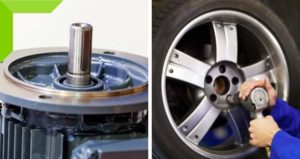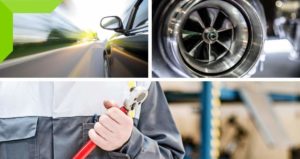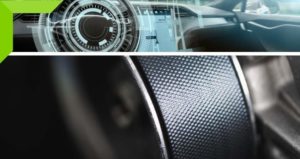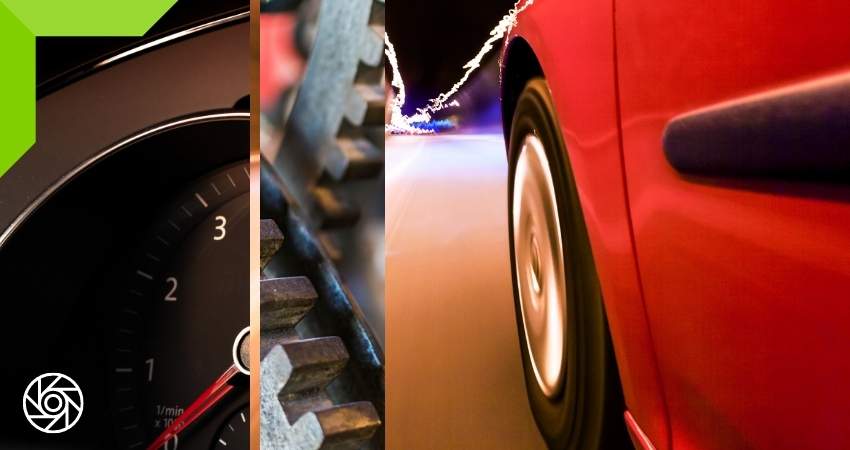If we look at gas-powered cars, no one can beat them at speed, but when it’s about torque and acceleration, EVs outperform them. EV cars were designed to produce maximum torque even at slow speeds. Therefore, EVs have the highest acceleration while still providing a smooth ride. But, Why does the electric car motor produce more torque at slow speeds?
Let Us Explain Why Does the Electric Car Motor Produce More Torque Even at Slow Speeds?
First, let’s understand torque and EMF. Torque is the force that tends to cause rotation. EMF is an electric and magnetic force field surrounding a moving electric charge.
Now, let’s look at the science of the relationship between Torque and Electromagnetic Force. You will find that Torque and EMF are inversely proportional, and torque and speed are also inversely proportional. In other words, when the EMF decreases, the rate decreases, and Torque increases.
Below is a detailed article revealing the fact behind this science. It will emphasize why you should move from gas-powered cars to luxurious electrical vehicles like Tesla, which provide a fast and smooth ride.
Why Is Torque Important in Electric Motors?

Torque is a force in the motor that powers a car’s engine to move. The more torque the motor produces, the greater its ability to perform work. High torque provides more power for the necessary movement.
A combustion engine needs a mixture of fuel and air to produce torque. As torque is consumed for combustion engines, it decreases gradually over the miles.
On the other hand, EVs require only the flow of electrons (electricity from the battery) to produce maximum torque immediately, which is why EVs are much faster than other vehicles.
For Example,
There is less torque at the first gear in a combustion engine. To increase the speed, you have to gear up for more Torque. This point also shows how speed and torque are inversely related, and torque decreases as we increase the speed.
On the other hand, you don’t need to change the gears when increasing the speed of an EV. EVs produce maximum torque right away! This way, consumers enjoy a smooth drive at higher speeds.
Relationship Between Torque and Speed
Let’s understand their basic idea to determine the relation between Torque and Speed. For an electric motor like the engine in your car, the Torque and Speed are considered similar, but that’s not true. Let us explain what exactly happens.

Torque is a rotational force that allows a car to rotate about its axis, while Speed is the rate or number of turns it makes while rotating. Torque and Speed are inversely proportional, meaning that when you increase the speed, the Torque (rotational power) decreases and vice versa. This is because the torque is supplied by the current, while faster speeds increase the back emf, which not only limits its final speed but blocks incoming current, lowering torque.
Below, I have dragged a relation in the form of a formula.
Commonly, Torque (τ) relates to the Speed (S), which we can determine through the given equation below.
Torque (τ) Is Inversely Proportional to Speed (s)
The angular speed is the rotation rate, while the torque is the force designed for rotational motion. The angular force acts inwards on the body, which rotates/moves along a curved path and is directed towards the center of curvature or the axis of rotation. Torque makes the object go through the rotation.
Torque (τ)= Force (F) x Radius ( r ) (for angular force)
Since: separating the force
Force (F) = Torque (τ) / Radius —-(1)
Here is the power formula, power is the work done per unit of time.
Power = work done/ time
As we know, work done = force x distance
Putting the work done formula in the power equation
We get,
Power= Force x linear distance / Time
Put the force value (equation 1) in the above equation of Power:
Power = Torque (τ) / Radius/radius x linear distance x time/ time
Power = Torque x Angular Velocity
Finally,
Torque (τ) = Power (p) / Angular Velocity —-(2)
The rotational speed in motors is measured using rotations per minute (RPM).
As we know,
Angular velocity = 2πN / 60
N = speed (RPM)
Putting angular velocity formula in equation 2
Power = (2π x speed x torque)/60
Torque = (60x power)/(2π x speed)
Speed is in RPM
Another formula for this is :
Torque = Power/ 2π Rotational Speed x lb ft/min x hp/33000 (lb ft/min)
≈ torque x RPM/5252
Where,
33000/2π ≈ 5252.11312
We hope you understand the relation and conversion between a rotating object’s power and speed.
How Is Torque Generated in Electric Motor?
So, before understanding the method of Torque in an Electric Motor, let’s look at how motors and generators work within an Electric car. Let’s get started on it.

Electric Motor
A magnetic field surrounds the motor as the current passes through it. This field allows the motor to rotate around its axis. Torque is simply the turning effect of an applied force. Torque is produced in motors by supplying the motors with either DC or AC current, creating a rotating magnetic flux. This complete method follows Fleming’s right-hand rule. The current travels from positive to negative; the motor will rotate faster if you apply more current. Applying more currents means you are generating more force. This force is multiplied by the distance to the center of the shaft. This turning effect is called torque.
Read: Why Do Electric Cars Use AC Motors?
Generator
The generator works like the Motor. The armature rotates around the copper wire in the motor when the vehicle goes to deceleration. Flaming’s right-hand rule states that the motor moves clockwise, and the wire spins, producing more current. This way, the motor generator has the energy to send backup to the batteries.
When you combine motor and generator factors, a back Electromagnetic Force (EMF) will produce. When the armature moves, the spin directly relates to the back EMF. If you spin faster, the EMF increases. When your motor does not rotate, it produces back EMF, which Torque generates.
An electric motor rotates and decreases the working voltage due to back EMF. That’s why or you can say, that’s through which a high Torque produces at Zero revolutions per minute (RPM).
What Happens to Torque When You Decrease the Speed in Electric Car Motor?
When discussing Torque, “Speed” means “angular speed.” Torque has a relationship with power consumption and angular speed, equivalent to Power = (Torque x Power consumption x Angular Speed). When the car travels a distance, there is a behind Torque which helps the car work considering the angular speed as the rate at which all the process happens. So, here is the simple science behind it: “ More the Torque is less will the angular speed required. The simple answer is, “When you decrease the angular speed, the Torque increases.” The angular speed and Torque are inversely proportional, but this condition applies to the constant input power.
Let’s take some situations to understand better.
When the power is constant in the machine, the DC motor’s speed will be controlled by the current, and speed will be inversely proportional to Torque.
Armature voltage controls the DC motor’s speed when the Torque is in contact. Again the torque is constant irrespective of speed.
Final Words
Again, let’s take your question: why does the electric car motor produce more torque at slow speeds? So, the answer is simple: in electric cars, the motor generator makes the power supply from the battery for running cars. When accelerated, the motor spins faster, producing back electromagnetic force (EMF). The overall net force applied to the wheels is the difference between the supply voltage and the EMF. The EMF is directly proportional to speed and inversely proportional to the overall net force. Therefore, the higher the speed, the smaller the net power.
To sum it up, if the speed is slow (or zero), there is little to no EMF, which means the supply voltage is immediately equal to the torque output. So, the maximum voltage is suddenly applied if you floor the throttle. Therefore maximum torque is immediately available. The torque is very high and constant, from zero to a nominal speed. As the speed increases, the torque decreases. Since it’s an electric motor, it can produce high torque at slow speeds as the motor does it.


